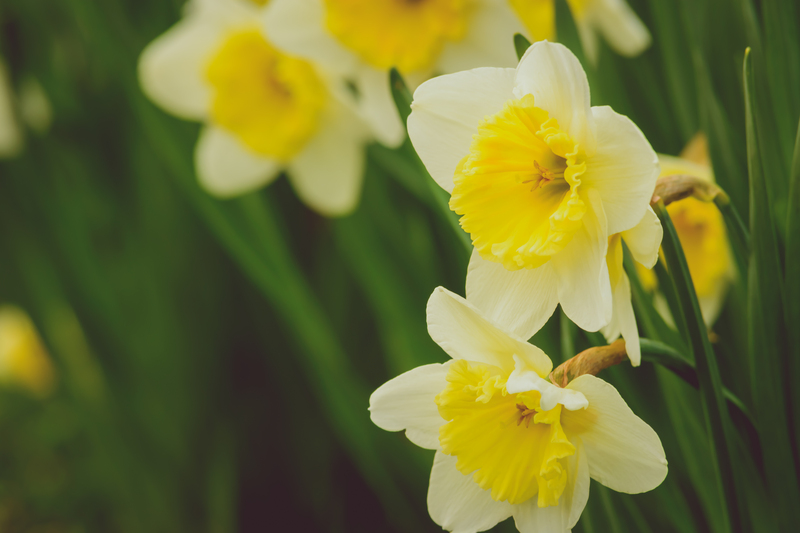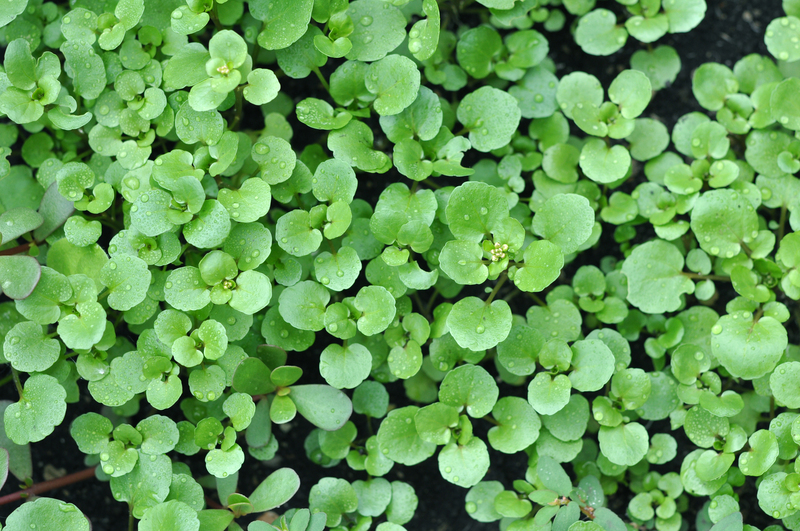Fostering a Sustainable and Lively Herb Garden at Home
Posted on 31/05/2025
Fostering a Sustainable and Lively Herb Garden at Home
Growing a vibrant herb garden at home is not only an enriching and enjoyable hobby but also a wonderful step toward living more sustainably. Cultivating fresh herbs provides you with immediate access to healthy seasonings, supports biodiversity, reduces your environmental footprint, and enhances your space with natural beauty and fragrance. Whether you're a seasoned gardener or a beginner eager to embark on your first green adventure, this comprehensive guide will walk you through every aspect of fostering a sustainable and lively herb garden at home.
Why Grow a Herb Garden at Home?
There are numerous benefits to nurturing your own herb garden at home. From boosting your culinary skills to promoting well-being, the advantages extend far beyond the kitchen:
- Fresh, Organic Flavors: Homegrown herbs are fresher and often more flavorful than store-bought alternatives.
- Environmental Impact: Growing herbs at home reduces food miles, packaging waste, and reliance on commercial agriculture.
- Cost-Effective: A sustainable herb garden can save you money in the long run.
- Health Benefits: Many herbs, such as basil, parsley, and mint, are rich in antioxidants and nutrients.
- Aesthetic and Fragrance: Herb gardens bring beauty and aromatic freshness to indoor and outdoor spaces.
- Biodiversity: Growing a variety of herbs provides habitat and nourishment for beneficial insects and pollinators.

Sustainable Practices for Your Home Herb Garden
Sustainability is at the core of any successful and lively herb garden. By making environmentally responsible choices, you ensure that your garden thrives without harming the planet. Below are key strategies to help you create a sustainable herb garden at home:
1. Choosing the Right Herbs for Your Environment
Start by selecting herbs that grow well in your local climate and with the available light in your home or outdoor space. Consider native species when possible, as they will require less water and care.
- Sun-Loving Herbs: Basil, thyme, oregano, rosemary, and sage love plenty of sunlight and thrive outside or on a sunny windowsill.
- Shade-Tolerant Herbs: Parsley, mint, chives, and cilantro can flourish with partial sunlight and are suitable for indoor gardens.
*Tip:* Research your local growing zone to determine the best herbs for your area and consider companion planting for optimal growth and pest control.
2. Using Organic Soil and Compost
The foundation of a lively and sustainable herb garden is healthy, nutrient-rich soil. Choose organic soil blends and enrich your garden with homemade compost. Composting kitchen scraps and yard waste not only diverts waste from landfills but also provides rich nutrients for your plants.
3. Water Conservation Techniques
_Conserving water_ is essential for sustainability. Implement these strategies to minimize water usage without sacrificing the vitality of your herbs:
- Use a drip irrigation system or watering cans to deliver water directly to plant roots.
- Mulch your herb beds with organic materials to reduce evaporation and maintain soil moisture.
- Collect rainwater in barrels for natural, chemical-free irrigation.
- Group herbs with similar water needs together for efficient watering.
4. Natural Pest Management
Avoid synthetic pesticides and opt for natural pest control to foster a robust, eco-friendly garden ecosystem. Here's how:
- Encourage beneficial insects like ladybugs and lacewings that naturally reduce pest populations.
- Plant companion herbs like basil and chives to deter common pests.
- Handpick pests when possible and use homemade sprays made from garlic or neem oil for a safe alternative.
*Did you know?* _Marigolds and nasturtiums are excellent companion plants that repel unwanted insects and attract pollinators._
5. Choosing Sustainable Containers
If you're tight on space or live in an apartment, you can still create a thriving herb garden at home using sustainable containers. Recycle old buckets, jars, or wooden boxes. Be sure they have adequate drainage to prevent root rot and support healthy growth.
How to Start Your Own Herb Garden
Ready to embark on your herbal gardening journey? Here's a step-by-step guide for fostering a lush and vibrant herb garden, whether outdoors, on your balcony, or right in your kitchen:
Step 1: Decide on Indoor vs. Outdoor Growing
Consider your space and lifestyle. Indoor herb gardens are great for urban dwellers and can be placed on windowsills, while outdoor patches or container arrangements flourish in backyards, patios, and balconies.
Step 2: Select Your Herb Varieties
Common easy-to-grow herbs include:
- Basil
- Mint
- Parsley
- Chives
- Rosemary
- Thyme
- Cilantro (Coriander)
- Dill
- Sage
- Oregano
*Pro tip:* Try starting with a few of your favorite culinary herbs before expanding your garden.
Step 3: Prepare Containers or Beds
Choose containers with drainage holes or create raised beds with organically enriched soil. If growing inside, select pots that fit your space and can be moved as needed to maximize sunlight.
Step 4: Planting Your Herbs
- Sow seeds according to packet directions, or transplant sturdy starter plants.
- Space plants adequately to allow for airflow and prevent diseases.
- Label each herb for easy identification and tracking.
Step 5: Water and Maintain Regularly
Keep soil consistently moist but not soggy. Herbs prefer well-drained soil. Remove dead leaves and watch for signs of pests or disease.
Step 6: Harvest and Prune
To keep herbs healthy and productive:
- Harvest regularly by pinching off leaves or stem tips to encourage bushier growth.
- Never remove more than one-third of the plant at a time to avoid stress.
- Prune back woody stems in late spring for herbs like rosemary and thyme.
Promoting Biodiversity in Your Home Herb Garden
A lively home herb garden can play a vital role in supporting local ecosystems. Encourage biodiversity by growing a variety of herbs and companion plants. Include flowering varieties such as lavender or borage to attract bees and butterflies. Diverse plantings prevent pest outbreaks and maintain soil health.
Attracting Pollinators
Pollinators are essential for a thriving garden. To attract more bees, butterflies, and beneficial insects:
- Grow nectar-rich herbs like lavender, fennel, and sage.
- Provide clean water sources, such as shallow dishes with stones.
- Avoid chemical pesticides that can harm pollinators.
Encouraging Soil Health and Natural Fertility
Rich, living soil is crucial for sustainability. Practice crop rotation in larger gardens and periodically add compost or organic fertilizers. Mycorrhizal fungi (found in some composts) can boost plant health and resilience naturally.
Creative Ideas for Herb Garden Designs
Make your herb garden lively and personal with creative designs that fit your space and style. Here are some inspiring layouts:
- Vertical Gardens: Use wall mount planters, pallets, or stacked containers to save space and create green walls indoors or outdoors.
- Spiral Herb Gardens: Build a spiral mound using stones or bricks to allow for microclimates and visual interest.
- Window Boxes and Rail Planters: Perfect for apartment dwellers and city living, providing easy access just outside your window or balcony.
- Kitchen Counter Gardens: Small pots or hydroponic systems make year-round indoor growing a breeze.
Common Challenges and Sustainable Solutions
Lack of Sunlight
If your home receives minimal direct sunlight, choose shade-tolerant herbs like mint, parsley, and cilantro. Reflective mirrors or supplemental grow lights can help indoor gardens flourish.
Pest Problems
Encourage natural predators, use gentle home remedies like soap spray, or install insect screens as a last resort. Healthy plants are less vulnerable to pests, so start with good soil, regular watering, and adequate airflow.
Limited Space
Opt for vertical gardens, stackable pots, or hanging baskets. Herb gardens at home can thrive even in small apartments.

Harvesting, Preserving, and Using Homegrown Herbs
Harvest herbs in the morning after the dew has dried but before the sun is strongest, which is when their oils are most potent. Use sharp scissors for clean cuts.
- Fresh Use: Snip herbs as needed for cooking, teas, or garnishes.
- Drying: Hang bunches upside down in a dry, dark, and well-ventilated space until crispy, then store in airtight jars.
- Freezing: Chop and freeze in ice cube trays with water or olive oil for convenient use in recipes.
- Herbal Infusions: Make homemade vinegars, oils, and tinctures for culinary and wellness uses.
Conclusion: Cultivating a Greener Future with Home Herb Gardens
Fostering a sustainable and lively herb garden at home brings countless benefits--from enjoying fresh herbs year-round to nurturing biodiversity and reducing your carbon footprint. With the right planning, organic practices, and creative design, you can turn any space into a verdant, aromatic oasis that delights the senses and supports the environment. Start small, experiment, and watch your home herb garden become a flourishing, sustainable centerpiece in your life.
Ready to start your herb gardening journey? Embrace these tips and watch your sustainable, lively herb garden grow--bringing health, flavor, and green inspiration to your home every day!
```
